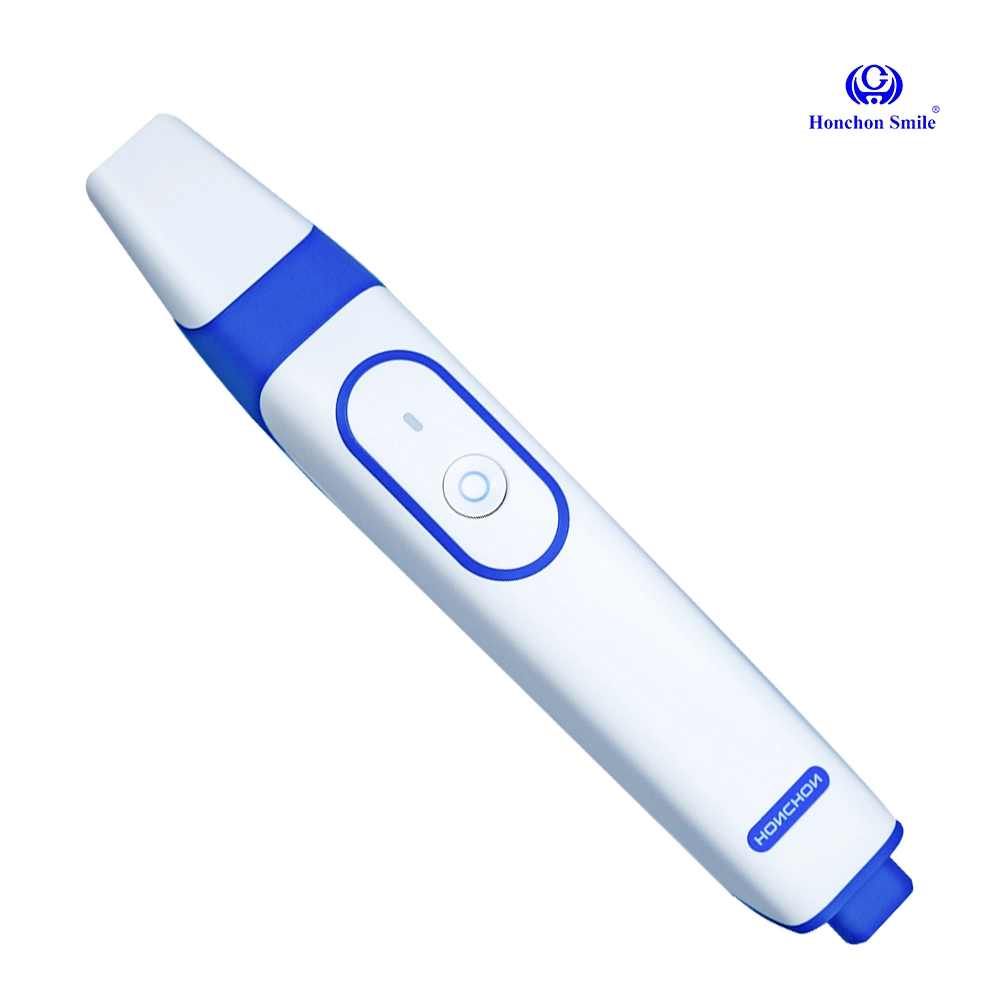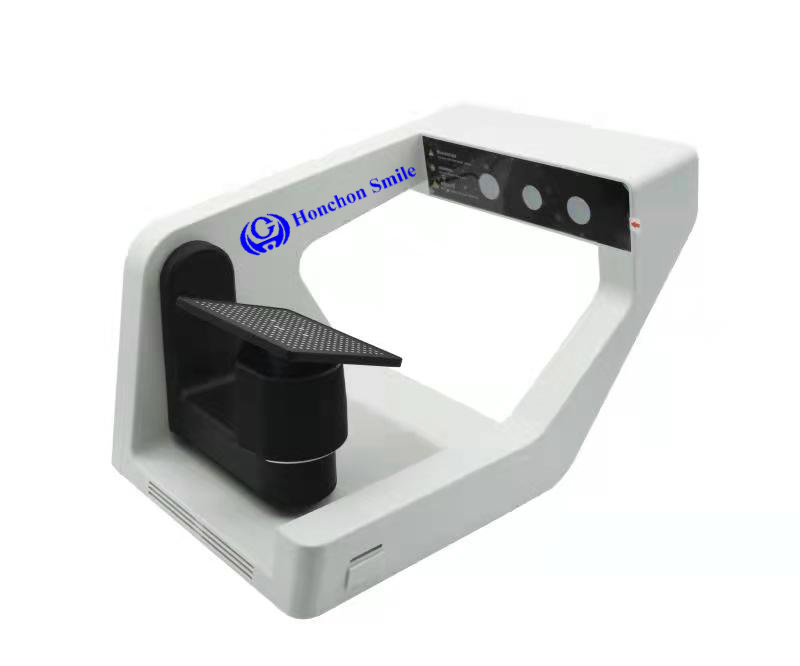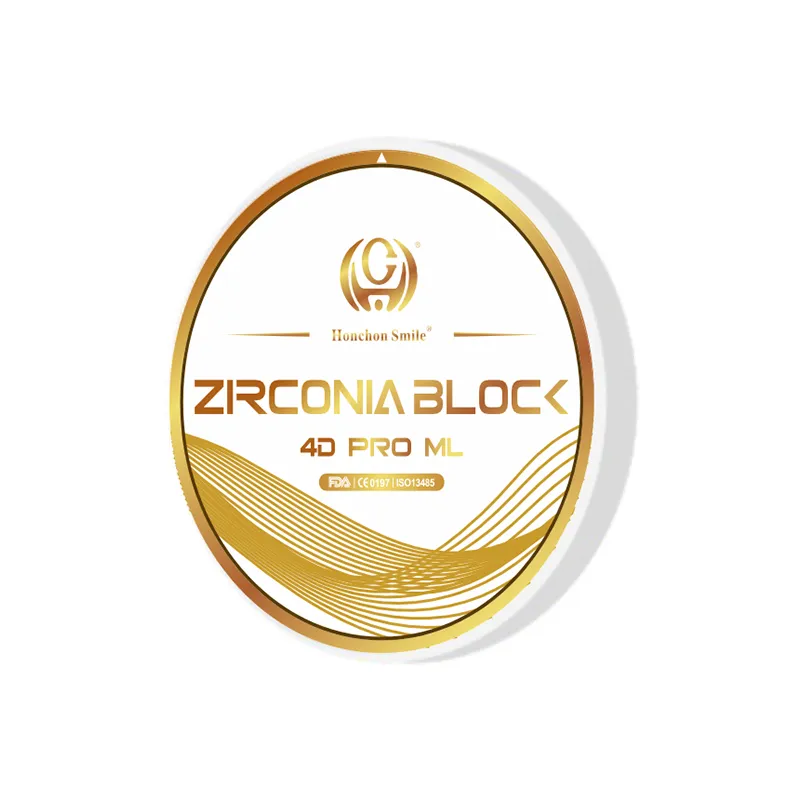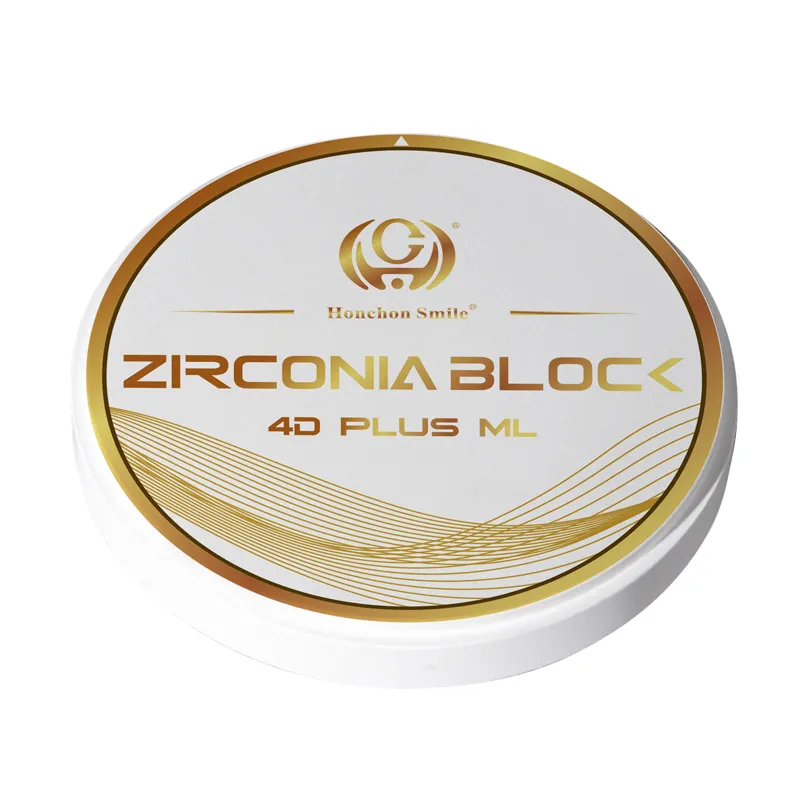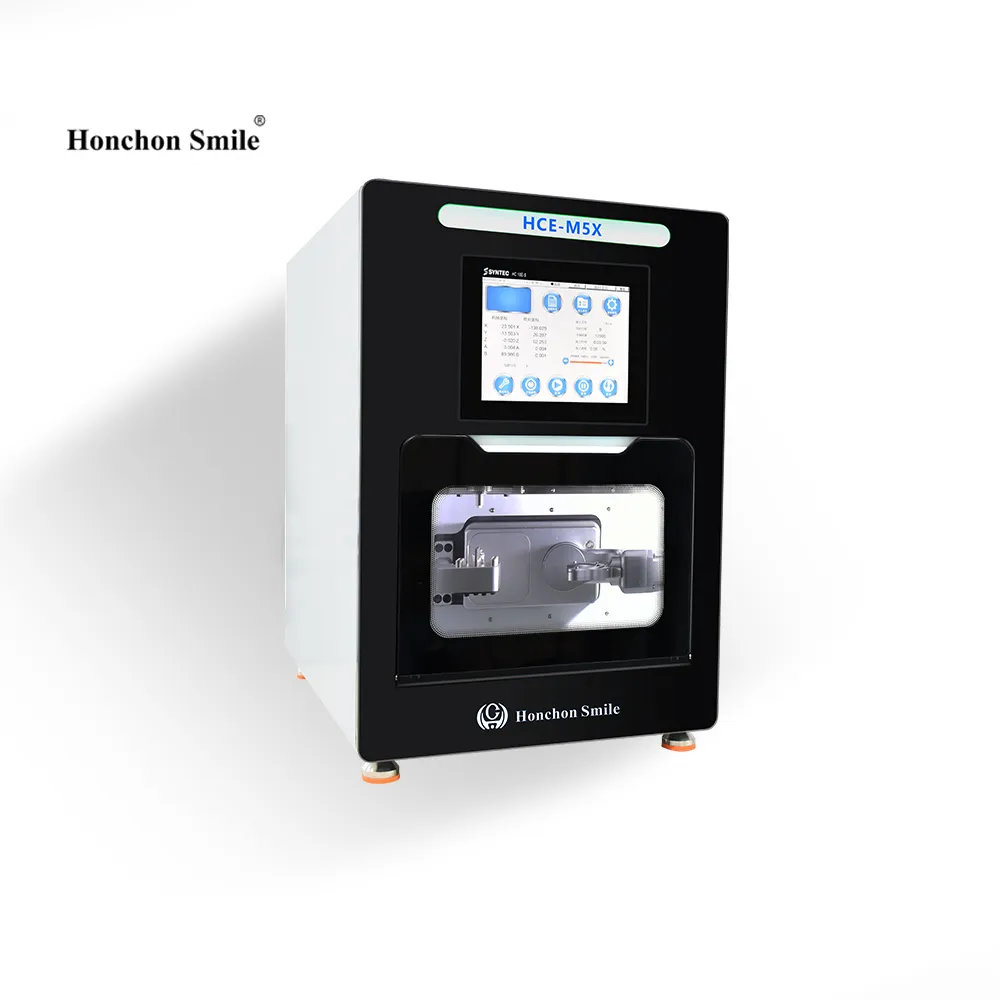1. What is a Dental Intraoral Scanner?
A dental intraoral scanner is a digital imaging device that captures accurate 3D models of a patient’s oral cavity. By projecting structured light and reconstructing point clouds through triangulation algorithms, it replaces traditional impression materials and supports a fully digital workflow in modern dentistry.

2. Advantages of Dental Intraoral Scanners
Digital accuracy: Delivers high-resolution 3D images with 20μm accuracy.
Time-saving: Scans quickly with minimal patient discomfort.
Patient-friendly: Comfortable, no more messy impression trays.
AI-powered features: Automatic bite adjustment, margin detection, undercut analysis.
Real-time visualization: 3D model updates live on screen.
Integration-ready: Exports in STL/PLY/OBJ for CAD/CAM and 3D printing.
Versatile rendering: Realistic, enhanced, or vivid color rendering options.
3. Principles of Dental Intraoral Scanners
The scanner works based on structured light projection and triangulation. It projects a light pattern onto the object, captures the deformation through cameras, and reconstructs the 3D structure using point cloud algorithms. AI algorithms stitch the captured frames into a complete digital model.
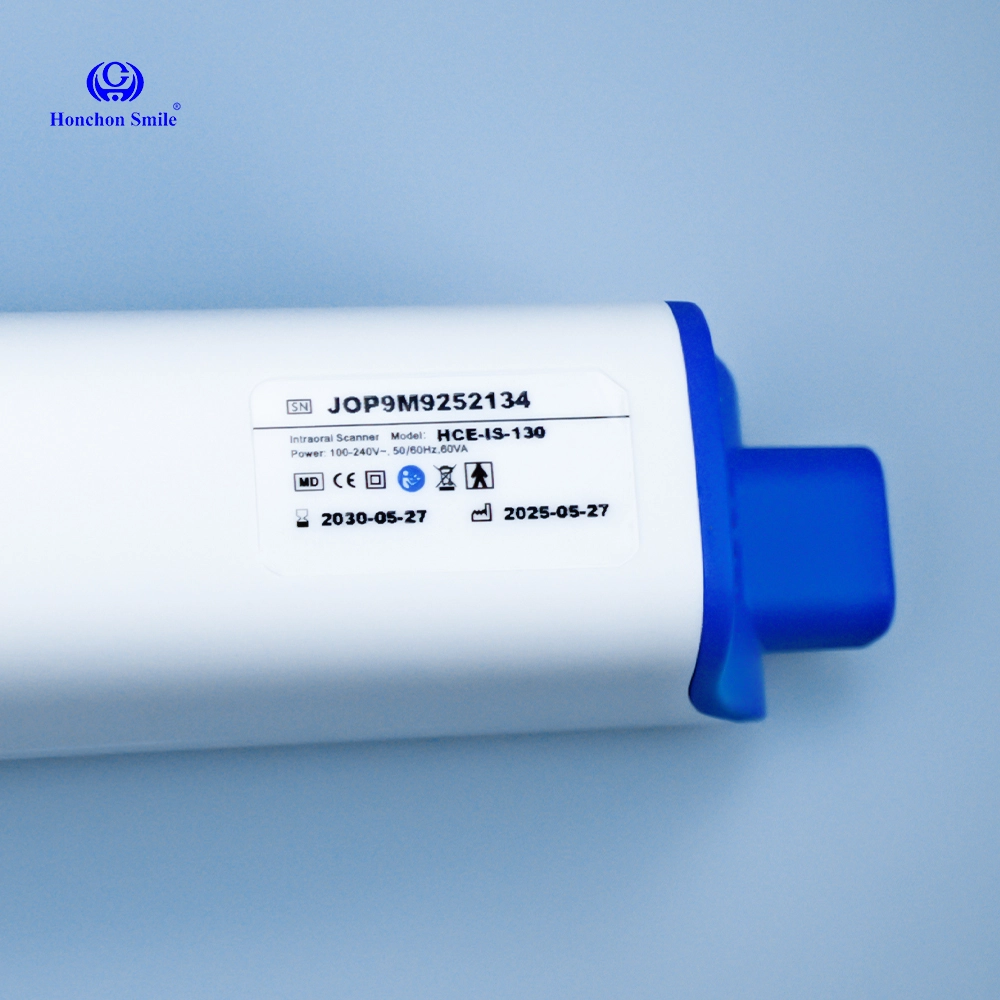
4. Applications of Dental Intraoral Scanners
General dentistry: Crowns, bridges, and inlays/onlays design.
Implantology: Accurate implant scanning using scan posts.
Orthodontics: Simulation of tooth movement and aligner design.
Dental labs: Model design for digital workflows and 3D printing.
Treatment planning: Clear visualization for patient consultation.
Color matching: Automatic shade suggestion tool.
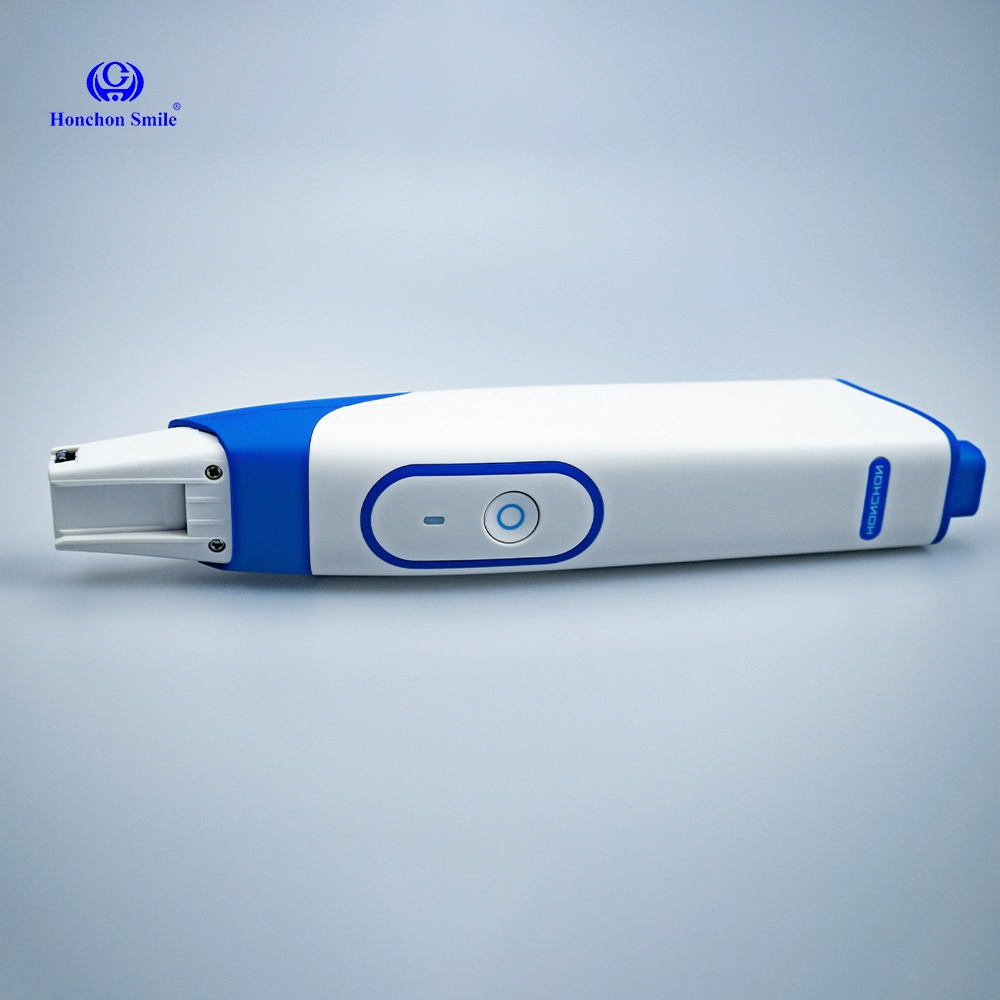
5. Comparison Between Our Dental Intraoral Scanners and Our Peers
| Brand | Size (mm) | Weight | Scan Depth | Calibration | Connection |
|---|---|---|---|---|---|
| HCE-IS-130 | 264×37×46 | 270g | -2~23mm | Yes | Single cable to PC |
| Aoralscan 3 | 270×50×40 | 240g | -2~20mm | Optional | Base + 2 cables |
| Freely P3 | 216×40×36 | 228g | 0~20mm | Yes | Adapter + 2 cables |
| Bluedental 3 | 240×49.5×30.5 | 210g | 0~15mm | No | Adapter + 2 cables |
| Foson 6000 | 240×39.8×57 | 350g | 0~15mm | Yes | Adapter + 2 cables |
| Lianyao 260 | 240×49×39 | 170g | 0~18mm | No | Direct to PC |
AI oral health report
Ortho simulation
Auto margin detection
3D model trimming
Bite adjustment
Color matching
6. Price of Dental Intraoral Scanners
The price of our scanner is based on model configuration, software modules, and volume of purchase. We support:
Competitive wholesale pricing
OEM/ODM pricing tiers
Discounts for bulk orders
Please contact us for a quote tailored to your needs.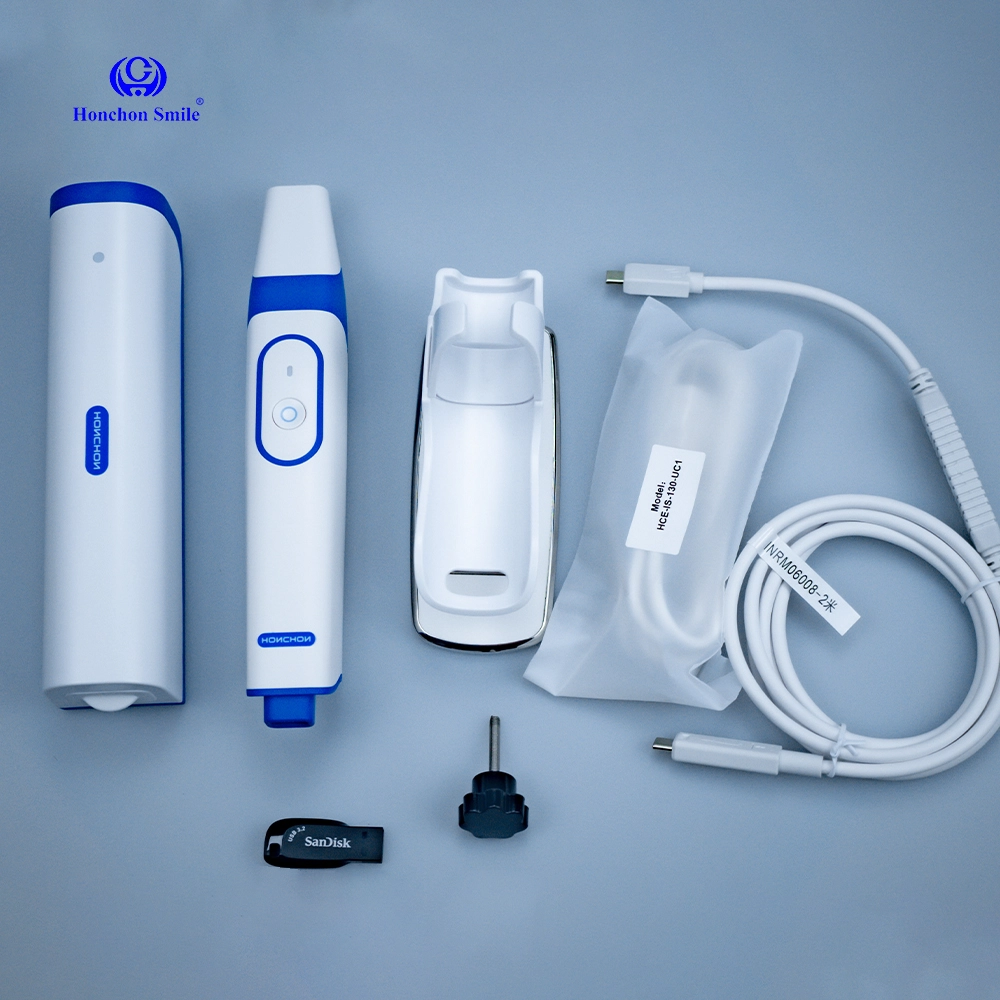
7. How to Cooperate with Us
Simple and Flexible Workflow:
Consultation – Confirm product details and specs
Demo – Sample or online software demonstration
Quotation – Offer based on configuration and quantity
Order Confirmation – Sign purchase agreement
Payment – Bank transfer or other methods
Production/Shipping – Quick delivery (1–3 working days for regular orders)
After-sales Support – Online training and technical help
8. Our Certifications
Our scanners and manufacturing facilities are certified by:
CE
FDA
ISO 13485
These ensure product quality, safety, and regulatory compliance for global markets.
9. Our Factory
Our factory is located in China and has:
8,000 m² production area
Advanced calibration and testing equipment
Monthly capacity of 10,000+ scanners
R&D team for software and hardware optimization
OEM & ODM services including logo, software interface, and packaging customization
10. FAQ
Q1: Is your intraoral scanner wireless?
A: No, it is connected via a single USB 3.0 cable for stable performance.
Q2: What file formats are supported?
A: STL, PLY, and OBJ.
Q3: Is calibration required?
A: Yes. Calibration is recommended before first use and every 1–2 weeks.
Q4: What are the PC requirements?
A:
OS: Windows 10 (64-bit)
CPU: Intel i5 11th Gen or higher
RAM: 16 GB
GPU: NVIDIA RTX 3060 (6GB) or better
SSD: 512 GB
Ports: At least two USB 3.0 ports
Q5: Is there training support?
A: Yes, we provide online video training, manuals, and 1-on-1 tech support.


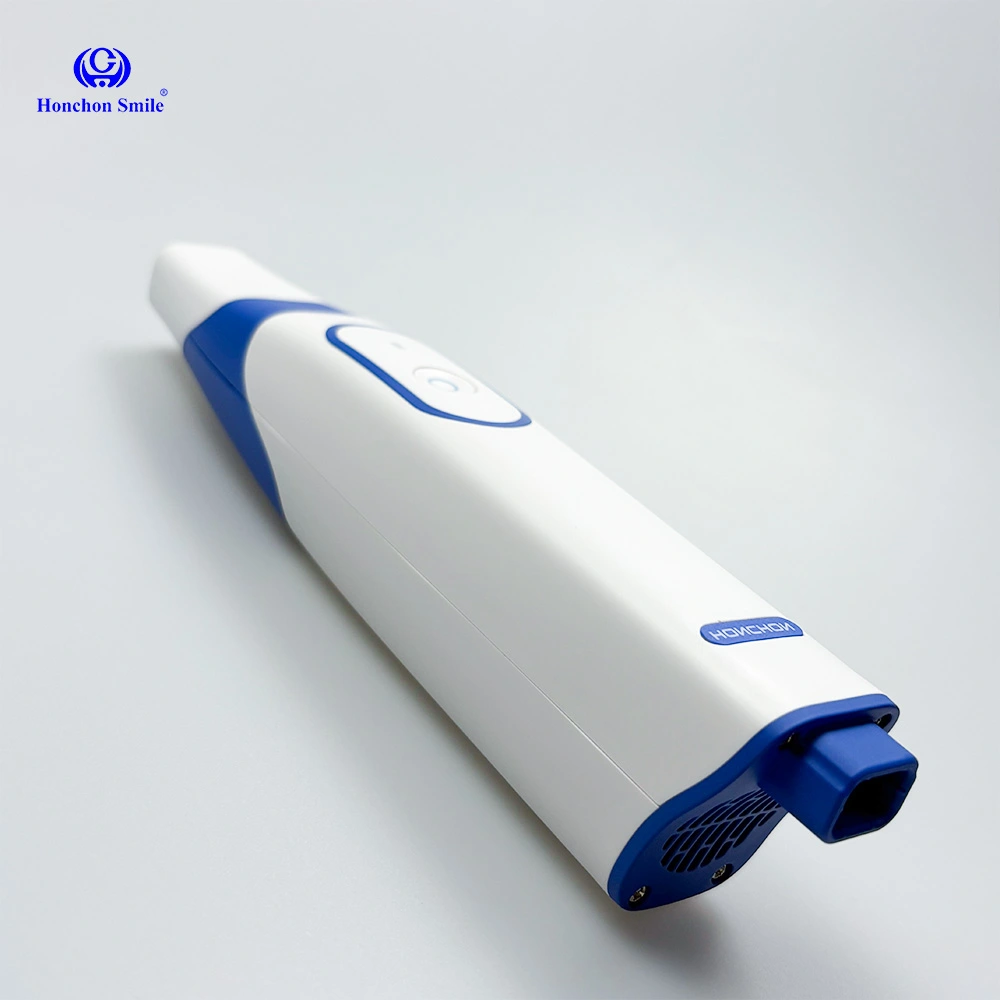
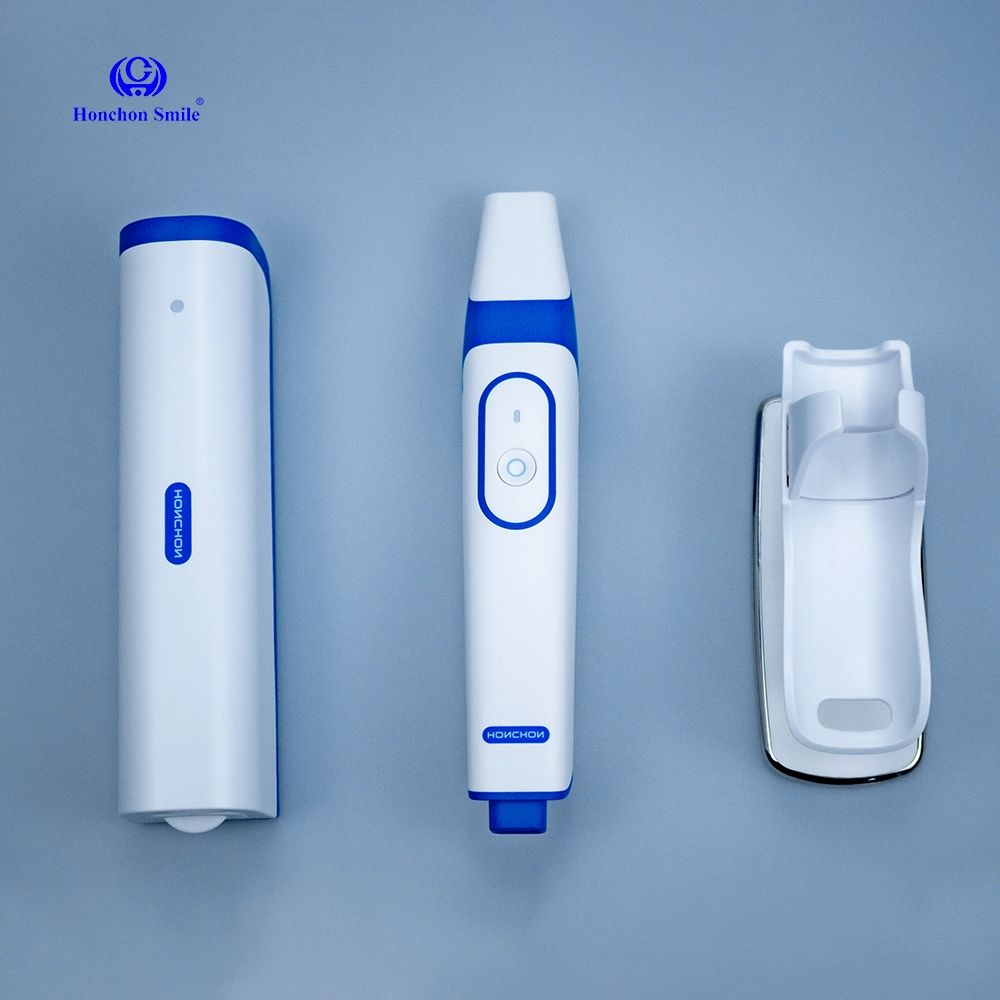

.jpg)
